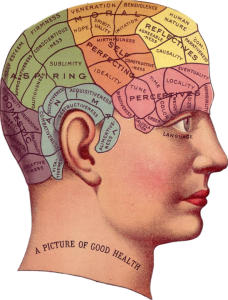Neuromyth Busters
Science and technology revolutionize our lives, but memory, tradition, and myth frame our response. — Arthur M. Schlesinger

After watching a good movie like Dr. Strange, or a terrible movie like Lucy, you may come to believe the powers of the mind are far greater than we think. And although there are examples of our “untapped” cognitive potential (e.g., the placebo effect, mindset framing), there exist a number of neuromyths (i.e., beliefs about the brain that are untrue).
And it’s not just the general public who believes them but educators, too.
THE BRAIN RUNS AT FULL CAPACITY
Probably one of the neuromyths that bothers me the most (because when this was disproved to me, I lost all hope I’d be an X-Man) is the idea that we “only use 10% of our brains.”
The truth is we very much use 100% our brains.
Although the awful movie Lucy would have you think otherwise, research shows we do in fact use all parts of our brain—just different parts at different times. However, survey data shows that about 35% of both the general public as well as educators still believe we only use 10% of it.

If you think about it from an evolutionary sense, why would we ever develop the brain we have, if 90% of it was non-functioning the majority of the time?
So although if, like me, you still try to move inanimate objects with your mind when you’re in boring meetings, sadly, you are/I am using 100% of our capacity to try to achieve this feat.
THERE IS ONLY ONE-BRAINED PEOPLE

But, as with the 10%-brain-usage claim, there is zero evidence to suggest people favor one side of the brain over the other. Nonetheless, about 65% of the public and 50% of educators still believe people can be categorized as right- versus left-brained.
However, research shows that both hemispheres of the brain are constantly at work simultaneously.
This myth originates from research showing that some of our cognitive skills (such as language) are predominantly on one half of the brain (i.e., what’s called “lateralization”). However, this is true for everyone: we all have our various brain structures in the same places.
Importantly, then, just because one person may be better at math versus writing, it doesn’t mean that they have a physiological advantage in that half of the brain. There are multitudes of other environmental and genetic reasons for this.
WE ALL LEARN BEST THE SAME WAY

Support of this neuromyth, unfortunately, is endorsed by over 90% of the general public and 75% of educators.
However, study after study after study after more studies have shown no evidence to suggest that people learn better if presented with material in their preferred format.
Even still, teachers are sometimes trained to “identify” a student’s preferred learning style (often by just asking them), and then trying to cater their lesson to this modality. But doing so is just an unfortunate waste of time and resources.
Although people themselves indeed report preferring certain ways of learning, that preference doesn’t translate into actual improved performance. That is, just because someone may categorize themselves as an auditory learner, there is no research to support that learning material in this format (vs. visually) results in any better outcomes.
NEURO-TRUTHS!
Hopefully, today’s post didn’t get you down if you really believed in any of those aforementioned myths. When I myself first learned the truth to all three of those, I was definitely disappointed.
However, by knowing what is fact and what is myth, and we can better improve our own (and others’) psychology by targeting the aspects of it that can actually do something. And for getting insight on everyday psychological application that actually do something, you’re already coming to the right site ????
Now, go on and spread the word!
Neuromythically,
jdt
Everyday Psychology: Looking for a couple more neuromyths to dispel yourself of? One in particular is the MYTH that children are less attentive after consuming sugary drinks/snacks. The TRUTH is that studies into the sugar-hyperactivity link show no association. Don’t believe me? Here’s an article from WebMD on the topic. Okay, one more neuromyth to dispel you ask? As it turns out reversing one’s letters is NOT a sign of dyslexia. The idea that dyslexia is characterized by “backwards reading” was rejected decades ago. Researchers now believe dyslexia IS more of a phonological rather than an a visual impairment. Don’t believe me again? Don’t worry; I have you covered.








Love this article
Great! I’m glad you found it valuable 🙂 Thanks for reading!